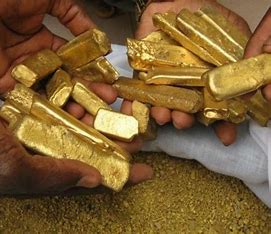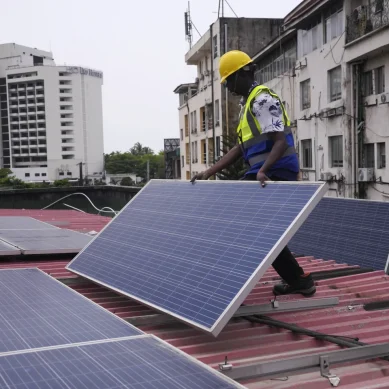
Known in the illicit gold underworld as “the embassies” artisanal gold refineries or smelters have intriguingly mushroomed in Nairobi’s posh Kilimani neighbourhood, although Kenya has no known gold deposits of commercial value.
And what may ordinarily pass as a coincidence, Kilimani is home to ambassadors of African countries that feature in findings of an investigation as sources of the contraband gold sold in the upmarket estate that also hosts the seat of the government – State House – military headquarters and four police stations in the capital.
However, illicit gold trade takes place under the very nose of these critical national institutions, raising serious questions about their harmonious coexistence.
Kilimani has over the years developed a reputation for massage parlour – another codeword for white collar prostitution. It is a residential area that has featured in multiple international and local criminal reports as a safe haven for drug barons, illicit weapon traders and flesh-pot hunger.
In recent years, though, it has acquired another address and criminal tag: Africa’s fortress for gold smelting. It is the centre-bolt of raw gold illicitly trafficked from east, central and west Africa, where the contraband mineral is purified before it is shipped – predictably – to Dubai in the United Arab Emirates and Hong Kong. The two cities are the world’s most famous destinations for contraband gold and diamonds.
A Kenyan gold dealer with expertise in aviation logistics opened up to an international agency investigating the gold underworld that has a foothold in Kilimani and provided a detailed account of how the upmarket neighbourhood is home to 10 artisanal refineries.
Police have red-flagged Kilimani and its environs as a sprawling crime scene that also hosts State House and the city’s “honourable” police stations – Kilimani, Kileleshwa, Muthangari and Upper Hill – where white collar criminals, international drug traffickers and gold smugglers prefer to be detained during arrest.
The source retained by Global Initiative Against Transnational Organised Crime (GI-TOC) details how he first made forays into the illicit ‘gold industry’. Among other experiences, he says, was in-person interaction with owners of artisanal gold refineries in Kilimani. He reveals that the area hosts 10 such facilities, but does not give specific locations of refineries known in the criminal underworld as “the embassies.”
GI-TOC says in a report titled All that Glitters: Revelation from a Kenyan Gold Smuggler that was released on September 8, 2023: “Since leaving the employ of the company five years ago, our source has settled into the role of an independent consultant within the Nairobi gold underworld – dealing with recalcitrant customs officials, facilitating access to artisanal smelting facilities, and arranging air transport.”
The report tells of a notorious illicit gold trafficker only identified by initials B.M and owns one of the gold smelters in Kilimani. BM is a frequent guest of the state for illicit gold trade, but has a way of wriggling out of police clutches unscathed.
As a case in point, early this year BM was arrested for defrauding two Americans of $500,000. The arrest was made “at the artisanal smelting facility he operates in Kilimani neighbourhood…two firearms and nearly 500 rounds of ammunition were discovered at the facility by police.” More importantly, the facility is guarded by armed by police officers from the General Service Unit (GSU).
“Such informal smelting facilities are hardly rare in Nairobi. With such volumes of illicit gold of wildly varying purity passing through the city, smugglers require secure locations to store and assay their consignments (as well as to carry out their cons),” investigators explain.
The report names populous Eastleigh, posh Karen, Embakasi and Kitengela as the other locations of artisanal gold refineries as Kilimani becomes a risky neighbourhood for illicit gold traffickers. However, most of the refineries are in Kilimani.
The need for artisanal refineries or smelters is informed by a meteoric rise in cons, the report says. In addition, the report says the portable X-ray fluorescence spectroscopy (XRF) scanners used as source points “are not always sufficient in themselves to guarantee the authenticity of a gold consignment.”
“To measure purity with confidence, it is often necessary to conduct fire assays on the samples in question, which requires technical expertise as well as facilities equipped with high temperature furnaces. Our source estimated that there were more than 10 such artisanal smelters located in the city, although he could only identify the locations of about half of them. Four of these installations had been nicknamed ‘the embassies’ by Nairobi gold dealers, owing to the fact that they were operated by ‘kingpins’ believed to be immune from arrest and prosecution.”
A 2022 incident involving a Lebanese businessman, also managing director of a small mining firm headquartered in Nairobi, further reinforces tales of Kilimani as the epicentre of gold underworld. The Lebanese wanted 500 kilogrammes of Congolese gold ferried to Tel Aviv, Israel.
“The consignment was being held at a compound located in Nairobi’s Lavington neighbourhood. Several photographs and mobile phone videos recorded at the compound and provided to the GI-TOC demonstrated how this process unfolded. The videos showed several individuals entering the Lavington compound. A witness reported that about 10 officers were guarding the compound, belonging to an elite paramilitary arm of the Kenyan police typically deployed to contain domestic unrest, secure strategic assets, and conduct counter-terrorism operations,” the report describes the scene.
The presence of members of the paramilitary unit lends credence to reports that the peddlers command influence in the higher echelons of government, specifically security formations and the executive.
The XRF scanners cost upwards of $20,000, but owning one is essential for any serious African gold prospector, the GI-TOC source explains. The acquisition of XRF scanners is informed is by cases where gold scammers offer use of their own XRF scanners in the field – devices that are often tampered with to display elevated purity levels. However, even with an XRF scanner it is possible to fall victim to a con, reports GI-TOC.
It says, “The scanners typically have a sampling depth of only millimetres and therefore might fail to detect elaborate hoaxes whereby base metals have been gilded to appear as solid gold bars. According to our source, this is easier done with nuggets than with doré bars. ‘With bars it’s easy to drill a hole in the middle and test the contents all through’, he said. With nuggets, on the other hand, ‘it’s difficult to know if they’re just plated or solid gold’”.
The reason for conducting ‘fire assays’ is because it is the most reliable means of determining the purity of a sample.
“Fire assays often require transporting the gold samples to a makeshift facility where they are subjected to extreme heat (upwards (upwards of 1,000°C) and combined with a reagent (called ‘flux’) to separate out the impurities. The reconstituted samples are then left to cool and are re-tested with an XRF scanner. As a hub for the illicit gold trade, Nairobi contains many such makeshift smelters…”
The gold smelting facilities are, as a routine, operated simultaneously with legally registered businesses. Such as the cases when in February this year, Congolese fish traders were killed at a facility owned by the man identified B.M and a 500-kilogramme consignment of Congolese gold was recovered.
- A Tell report / Juma Kwayera











